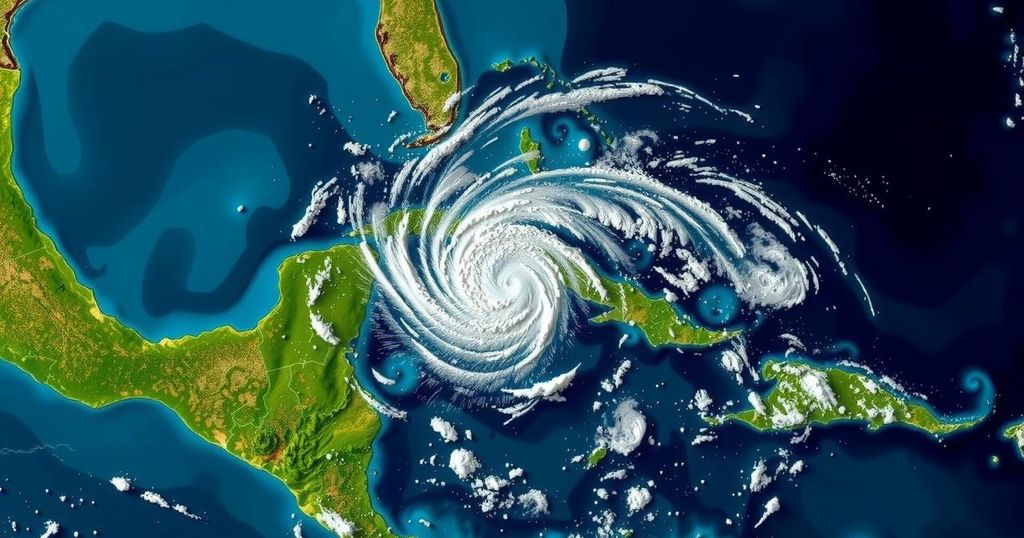Hurricane Rafael: Path and Impacts Following Cuban Landfall
Hurricane Rafael, currently a Category 2 storm, is expected to traverse westward across the Gulf of Mexico and may weaken into a tropical storm. It recently made landfall in Cuba, causing significant power outages. Environmental conditions appear unfavorable for further development of new tropical disturbances near Puerto Rico and Haiti, which is pertinent to ongoing monitoring efforts.
Hurricane Rafael, currently classified as a Category 2 storm, is anticipated to gradually move westward across the Gulf of Mexico over the coming days. The atmospheric conditions in this region, which include significant wind shear, arid air, and cooler waters, are likely to inhibit the storm’s intensity. Meteorologists predict that Rafael may weaken to a tropical storm as it approaches Mexico on Sunday. As of the latest update from Thursday at 7 a.m., the tropical storm warning for the Dry Tortugas has been lifted, and forecasters caution that the hurricane could generate hazardous surf and rip currents in the Gulf. On the previous Wednesday, Hurricane Rafael made landfall in western Cuba at a Category 3 level, causing substantial disruption to the nation’s electrical infrastructure, which has been under strain following previous storms. Notably, earlier this month, Hurricane Oscar had all but devastated the eastern regions of Cuba, resulting in eight fatalities and significant damage to approximately 20,000 residences. Furthermore, the National Hurricane Center has diminished the likelihood of a new tropical disturbance forming north of Puerto Rico and Haiti, currently estimating only a 20% chance of potential development into a tropical depression in the following week.
Hurricanes are severe tropical storms that develop over warm ocean waters and can cause extensive damage upon making landfall. Hurricane Rafael’s trajectory and expected weakening underscore the complexity of forecasting storm paths which can be influenced by environmental conditions such as air temperature, moisture, and wind patterns. Cuba has a history of encountering destructive hurricanes, leading to detrimental socio-economic impacts and infrastructure challenges, as evidenced by recent storms that have impacted electrical grids and housing.
In summary, Hurricane Rafael is projected to move west across the Gulf of Mexico, potentially weakening due to unfavorable atmospheric conditions. The storm has already inflicted damage in Cuba and raised concerns about surf and currents across the Gulf. With forecasters monitoring for any new disturbances, the resilience of affected regions remains a critical consideration as they recover from recent hurricanes.
Original Source: www.tampabay.com




Post Comment